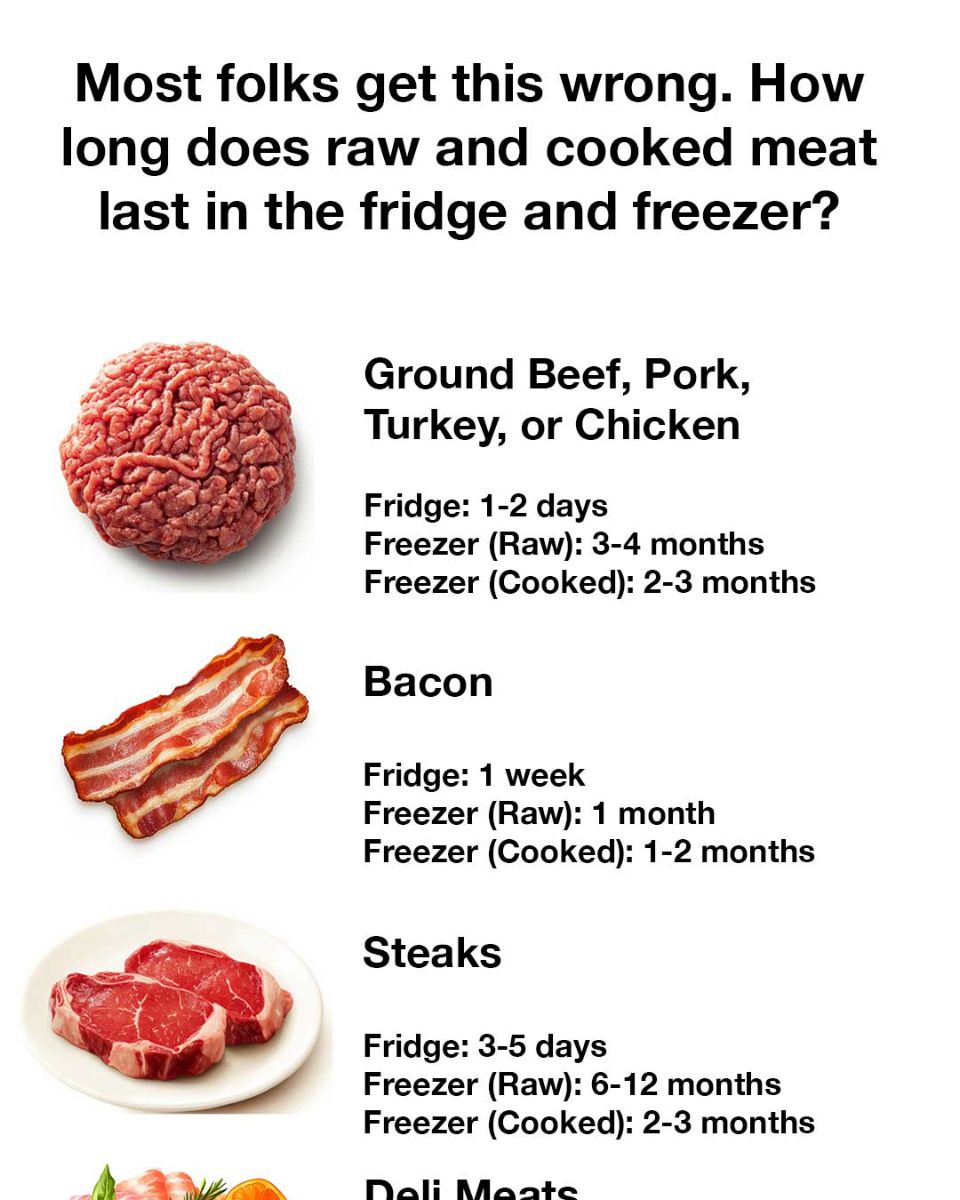Fridge: 3-5 days
Freezer (Raw): 8-12 months
Freezer (Cooked): 3 months
🔹 Why? Lean game meat freezes well but dries out when cooked.
25. Cooked Venison or Game Meat
Fridge: 3-4 days
Freezer: 3 months
🔹 Why? Cooked wild meat loses moisture quickly but remains edible for months.
Tips for Extending the Shelf Life of Meat
To extend the shelf life of meat, always store it in airtight containers or vacuum-sealed bags to prevent exposure to air. Label and date your meat before freezing, and use the oldest items first. Consider portioning meat before freezing for easier thawing and use.
Signs That Meat Has Gone Bad
Signs that meat has gone bad include a sour or off smell, slimy texture, and discoloration. If you notice any of these signs, it’s best to discard the meat to avoid the risk of foodborne illness.
The Role of Packaging in Meat Storage
Packaging plays a vital role in meat storage by protecting it from air, moisture, and contaminants. Vacuum-sealed packaging is ideal for freezing as it removes air and prevents freezer burn. In the fridge, airtight containers or plastic wrap can help maintain freshness.
Common Mistakes in Meat Storage
Common mistakes in meat storage include leaving meat out at room temperature for too long, not sealing packages properly, and overloading the fridge or freezer, which can affect air circulation and temperature consistency.
Expert Recommendations for Meat Storage
Experts recommend following the ‘first in, first out’ principle to ensure older meat is used before newer purchases. Regularly check your fridge and freezer temperatures to ensure they are at safe levels, and always thaw meat in the fridge rather than at room temperature.
Conclusion: Best Practices for Meat Storage
By understanding the proper storage guidelines for raw and cooked meats, you can ensure food safety and quality. Always pay attention to storage times, use appropriate packaging, and maintain the correct temperatures to prevent spoilage and foodborne illnesses.
Additional Resources and References
For more information on meat storage and safety, consult resources such as the USDA Food Safety and Inspection Service, the Centers for Disease Control and Prevention, and reputable food safety websites. These sources provide comprehensive guidelines and updates on best practices for meat storage.
